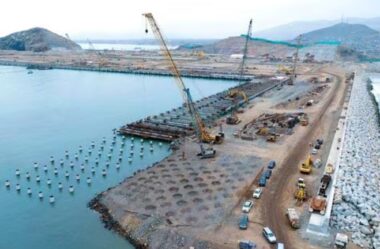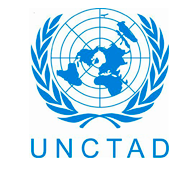Tempo de leitura: 5 minutos
Special Economic Zones (SEZs) encompass a range of typologies, including industrial parks, free ports and urban enterprise zones. Still, they all have one feature in common: a territorially demarcated area that provides incentives for capital and trade, promoting investment, job creation and improved livelihoods.
There are more than 7,000 SEZs1 globally, supporting industries that contribute to local and national economies. Some outstanding examples include China’s Shenzhen Special Economic Zone, the Dubai Multi Commodities Centre, India’s Foxconn Industrial Parks, Singapore’s Jurong Island, and Morocco’s Tanger Med Special Agency.
Nevertheless, their impacts in developing countries tend to be localized and limited, performing only as well as the country average in terms of economic growth, and having little effect on their host territories.2
But in this new era of cleantech and rapid technological expansion, developing countries may benefit from a new generation of SEZs that take advantage of the energy transition and advanced technologies.
Energy transition
Some SEZs in developing countries are differentiating themselves by promoting circular economy principles, developing and implementing net-zero strategies, and adopting models such as the International Framework for Eco-Industrial Parks (EIPs).3 The Framework requires industrial parks, responsible for 15–20% of total global CO2 emissions,4 to adopt resource-efficient practices and report environmental performance against indicators such as energy efficiency, renewable energy supply, and greenhouse gas (GHG) reduction.

According to the World Bank,5 about 250 self-declared eco-industrial parks are in operation or under development around the world. SEZs in general require stable and affordable sources of energy, and increasingly demand clean and renewable power. Given emerging markets’ competitive advantage in producing green hydrogen and its derivatives, due to abundant solar energy to power electrolysis, there is a unique opportunity for industrial synergies.
This green transition is already boosting foreign direct investment (FDI) in developing countries as renewables constitute higher proportions of project values (see figure above), and greenfield FDI with renewables such as green hydrogen, wind and solar power is expanding worldwide (see figure below).

Renewables such as solar, wind and hydrogen are difficult to store and transport, so SEZs may move closer to territories where cleantech is produced. Specifically in the case of green hydrogen, development banks are starting to support initiatives in Africa and Latin America that successfully produce energy at competitive prices. Factories will therefore have a great incentive to produce in those territories. If, in addition, input commodities are available nearby and transport hubs are in place, this may support a new generation of SEZs.
Frontier technologies
Similarly, digital transformation and frontier technologies are changing the nature of production. Artificial intelligence, 3D printing, big data, robotics and other developments are becoming critical for productivity and competitiveness. Two leading technologies are particularly relevant for SEZs: digital twinning and the metaverse.
Digital twinning creates a virtual representation of an object, person or process, and simulates real situations and their outcomes; this can be applied to a product, a production process, or an entire factory. By creating a digital “twin”, firms can save resources by building virtual prototypes and testing them before going into production.
The metaverse is the next step in that same direction, creating virtual shared spaces (customized digital worlds) where multiple stakeholders can collaborate (as avatars) from anywhere with an Internet connection. For example, a new production process can be planned and visualized in virtual reality, perhaps depicting a digital factory, testing for floor space, trialling alternative processes, and estimating costs and benefits.
According to recent surveys, only 4% of investment promotion agencies are using the metaverse to promote their countries and SEZ sites, but the number is growing.6 Although they are still too early to assess, initiatives are emerging for metaverse SEZs including one in the Caribbean7 and another in the Central Africa Republic.8
The UK’s Alan Turing Institute has developed a research cluster to develop digital twins across a variety of fields, from agricultural modelling to aerospace engineering.9 Companies in Novi Sad (Serbia) are already working with engineering faculties in Brazil through the metaverse; these collaborations are set to grow as long as good connectivity is in place. As virtual reality and the metaverse take on artificial intelligence (AI) capabilities, they will transform the nature of research and development, integrating production facilities with universities worldwide.
The way forward for SEZs
Some developing countries are pioneering new ways to design and promote their SEZs. Egypt, for example, established the Suez Canal Economic Zone in 2015 with the aim of attracting foreign investment to the country. It is now focusing on becoming a global hub for green hydrogen production, combining its geographical advantage near the world’s most significant shipping corridor with abundant solar energy.
Combining these natural resource advantages with technologies that compensate for distance to hubs of expertise can benefit developing countries with the right underlying infrastructure and policies. Specifically, access to clean energy and internet connectivity will be the lynchpins of the future SEZ, so investment in communications and renewable electricity infrastructure should be prioritized. Export-oriented SEZs must also pivot away from low-waged, low-skilled workforce models to stay relevant.
If developing countries adapt to these new trends in energy and frontier technologies, SEZs may be the key to reconfiguring global value chains.
- Marco Kamiya is United Nations Industrial Development Organization (UNIDO) Representative for Indonesia, Timor Leste, and ASEAN Affairs based in Jakarta.
- Stefan Kratzsch is Team Lead at the Directorate of SDG Innovation and Economic Transformation of the United Nations Industrial Development Organization (UNIDO).
- Salil Dutt is Chief Technical Advisor (CTA) at the United Nations Industrial Development Organization (UNIDO) office in Jakarta.
Disclaimer: The views expressed in this article are those of the authors based on their experience and on prior research and do not necessarily reflect the views of UNIDO (read more).
References
- UNCTAD (2022), “New global alliance of special economic zones to boost development”.
- World Bank (2017), Special Economic Zones An Operational Review of Their Impacts.
- World Bank. 2021. International Framework for Eco-Industrial Parks v.2. Washington, DC: World Bank.
- GLASGOW, Scotland, Nov. 3, 2021 /PRNewswire on COP26
- WBG (2018). Eco-Industrial Parks Emerge as an Effective Approach to Sustainable Growth.
- UNIDO (2022) “UNIDO-WAIPA 2022 IPA Profiling and Digitalization Survey”.
- Metaverse based-SEZs, 2022.
- Sango.
- Alan Turing Institute on Digital Twinning, 2023.
Fonte: IAP UNIDO







Os comentários foram encerrados, mas trackbacks e pingbacks estão abertos.